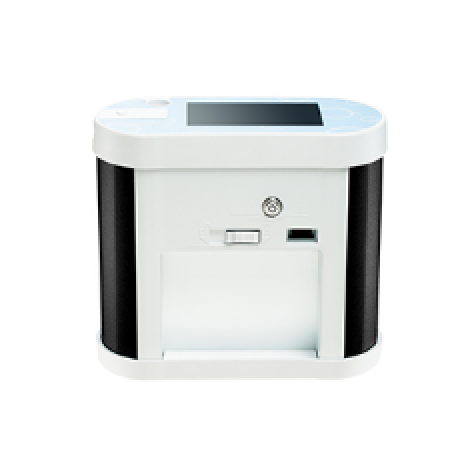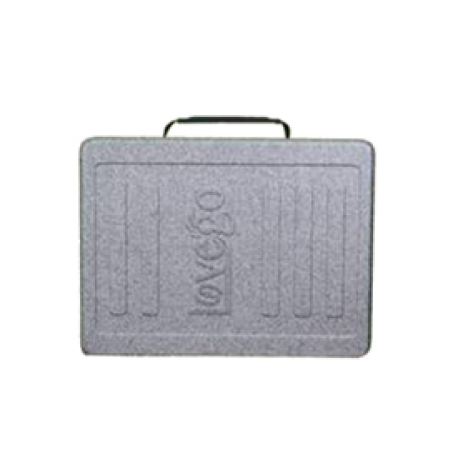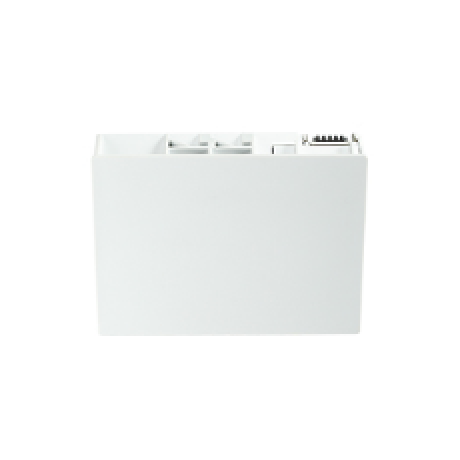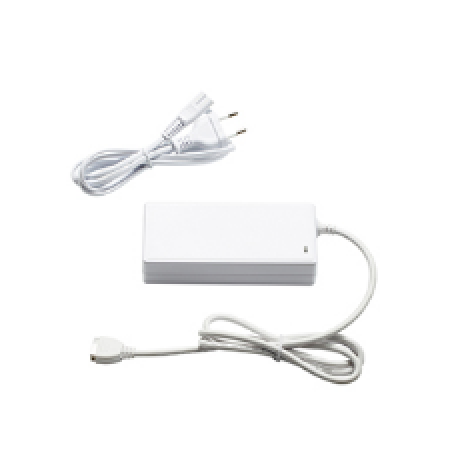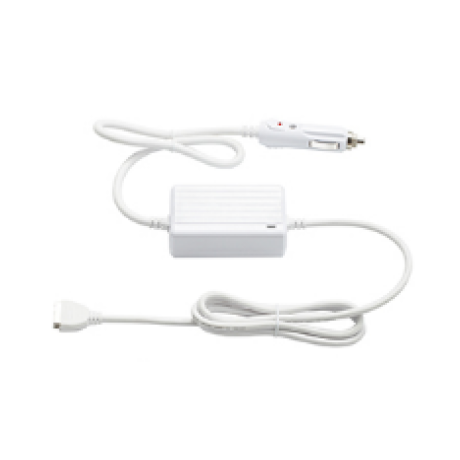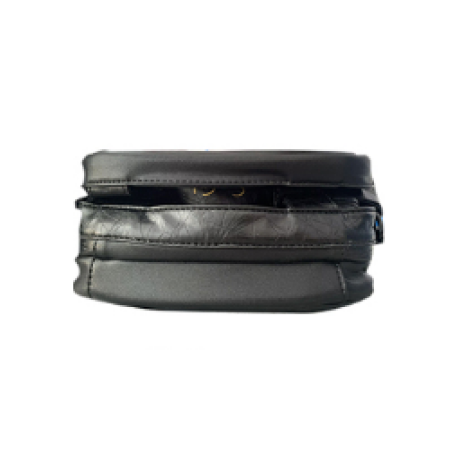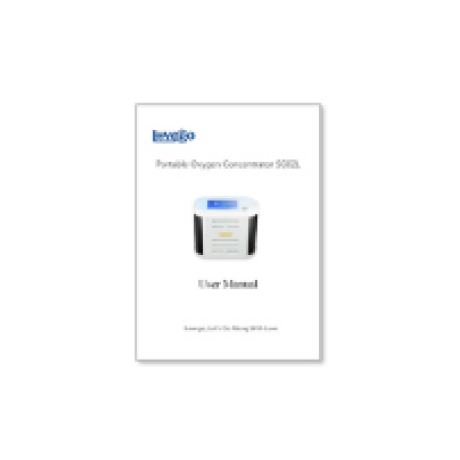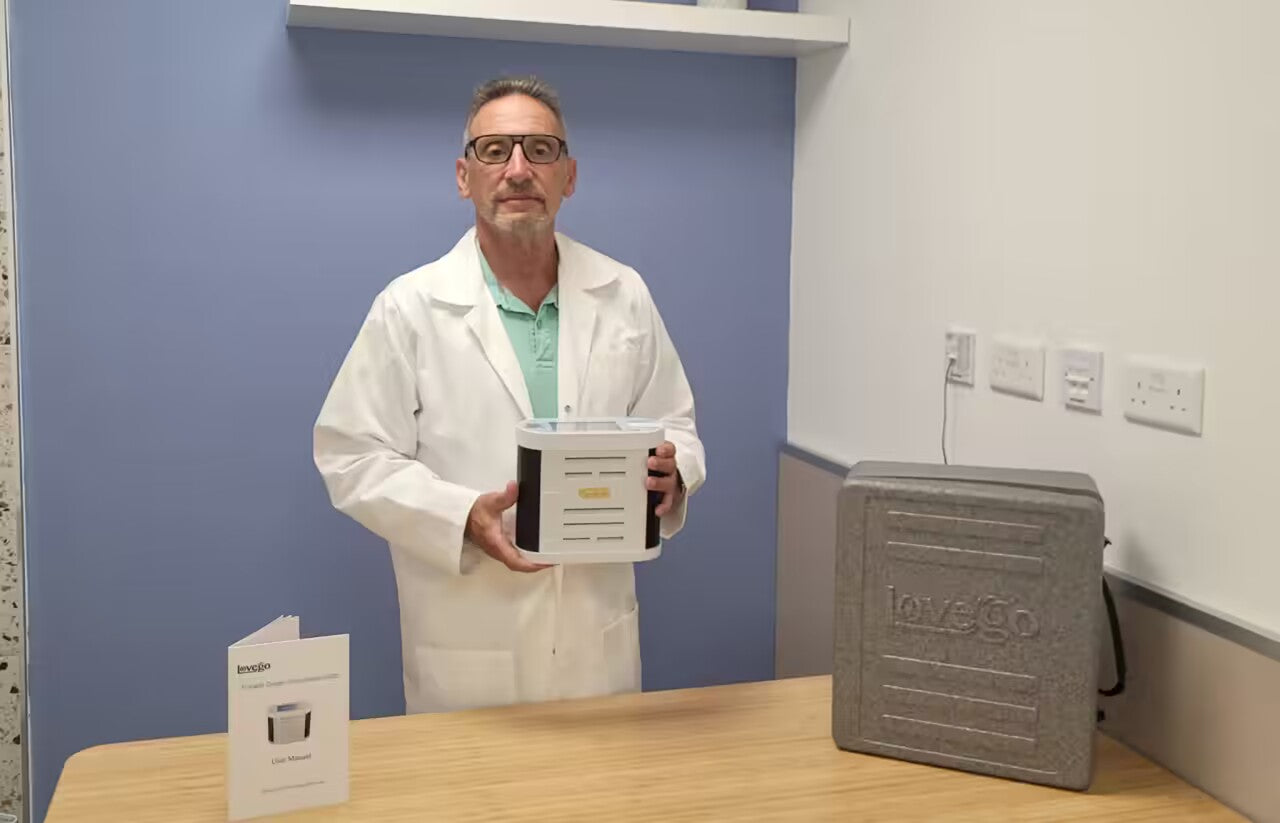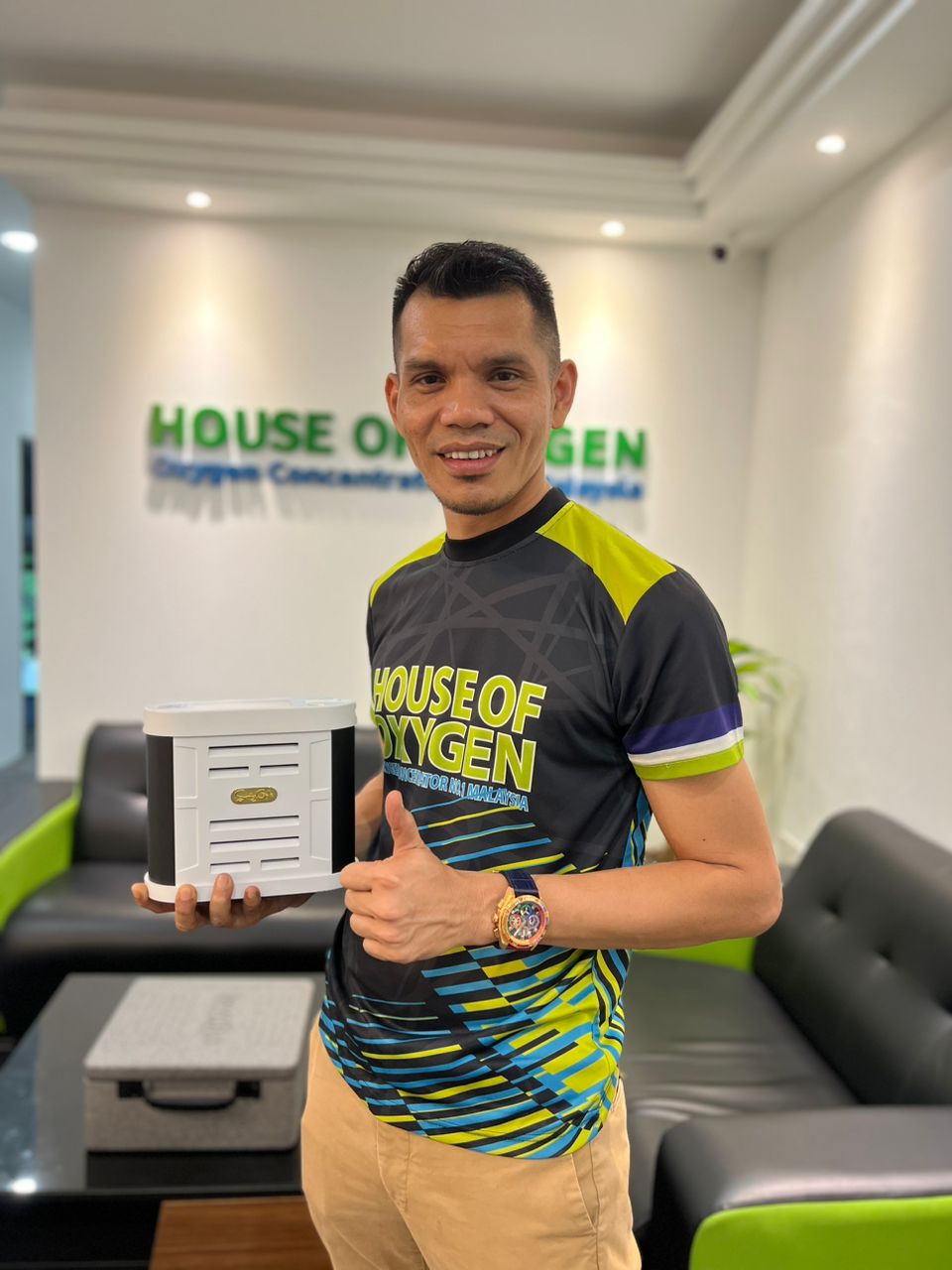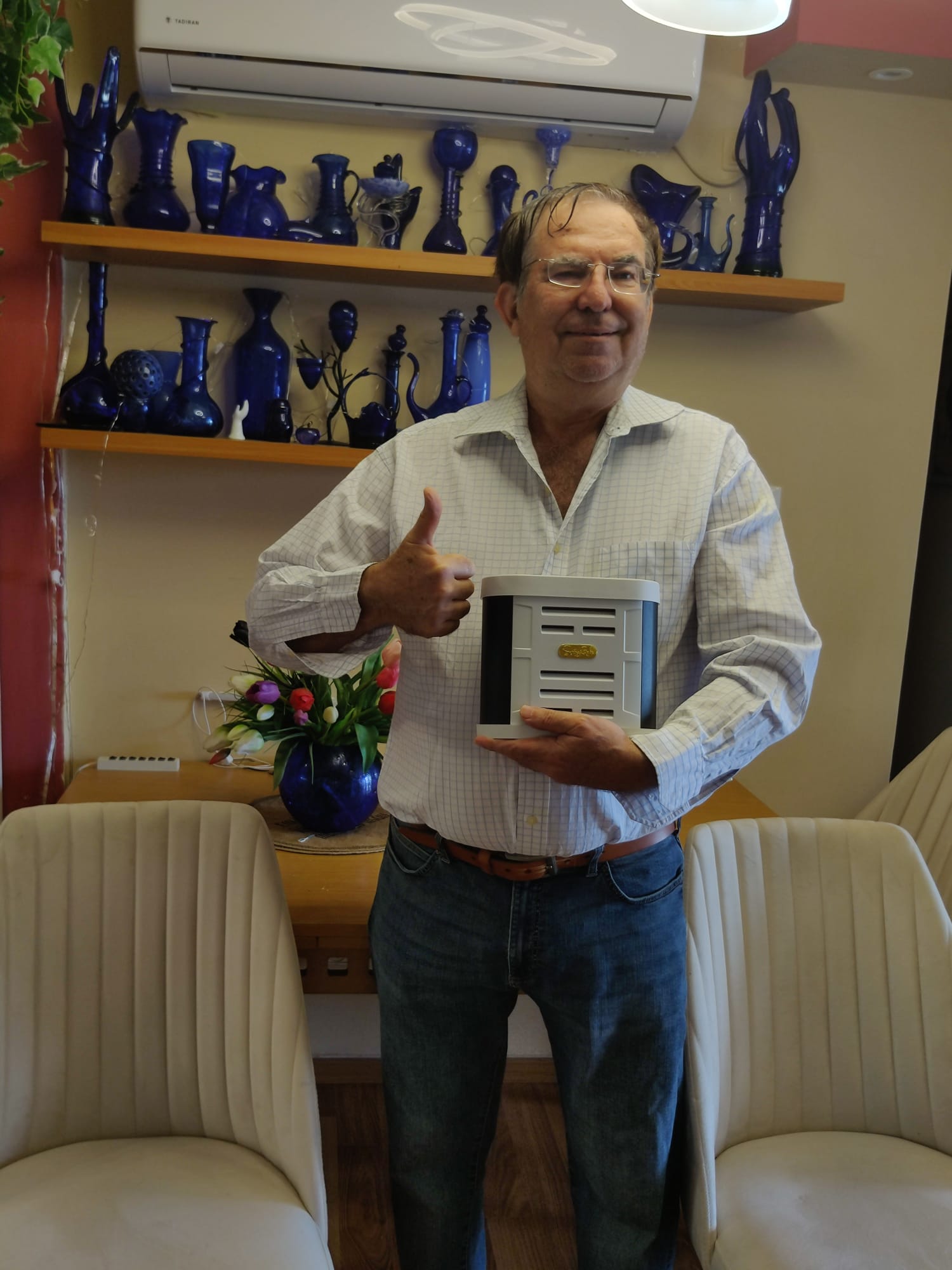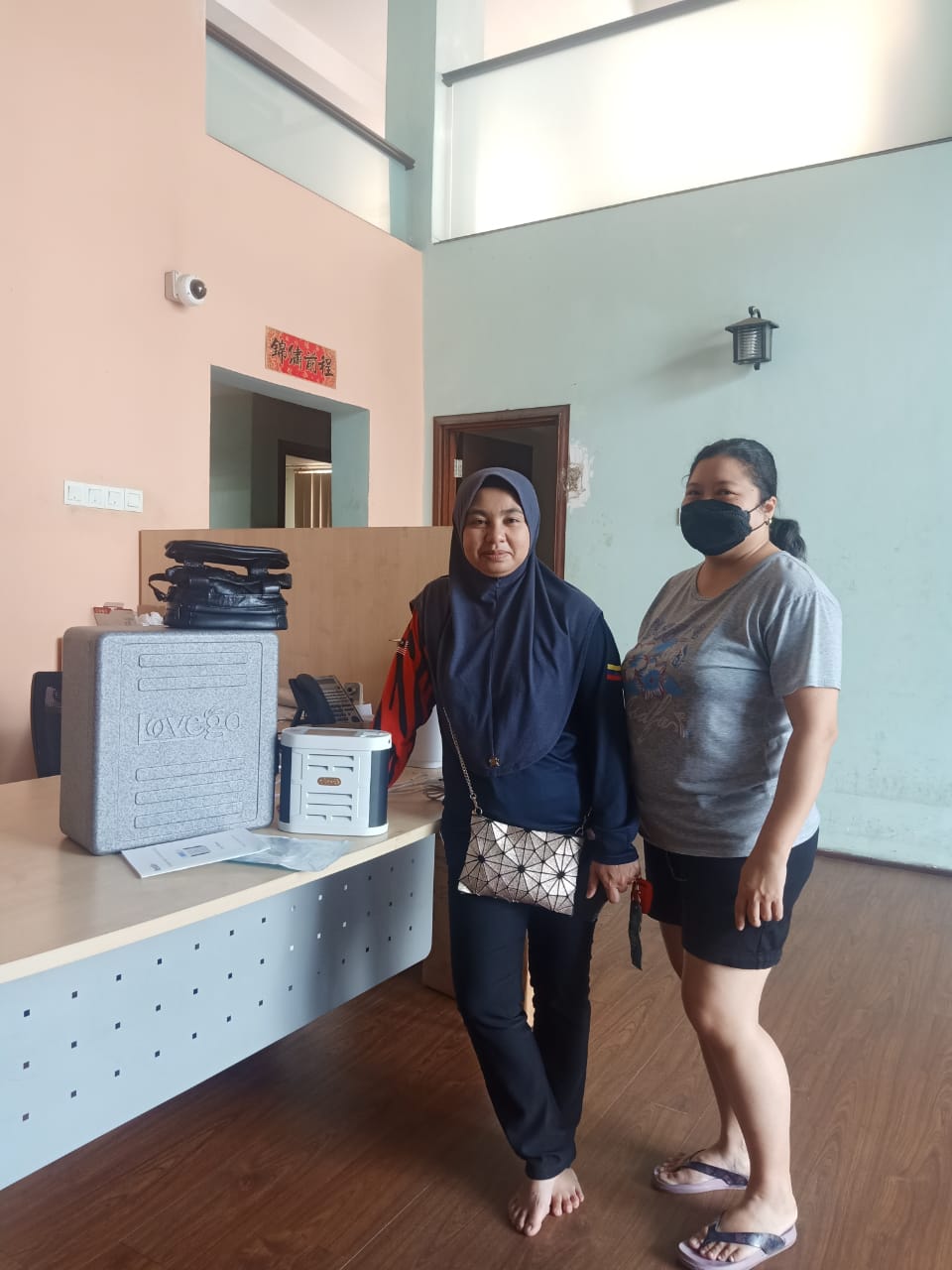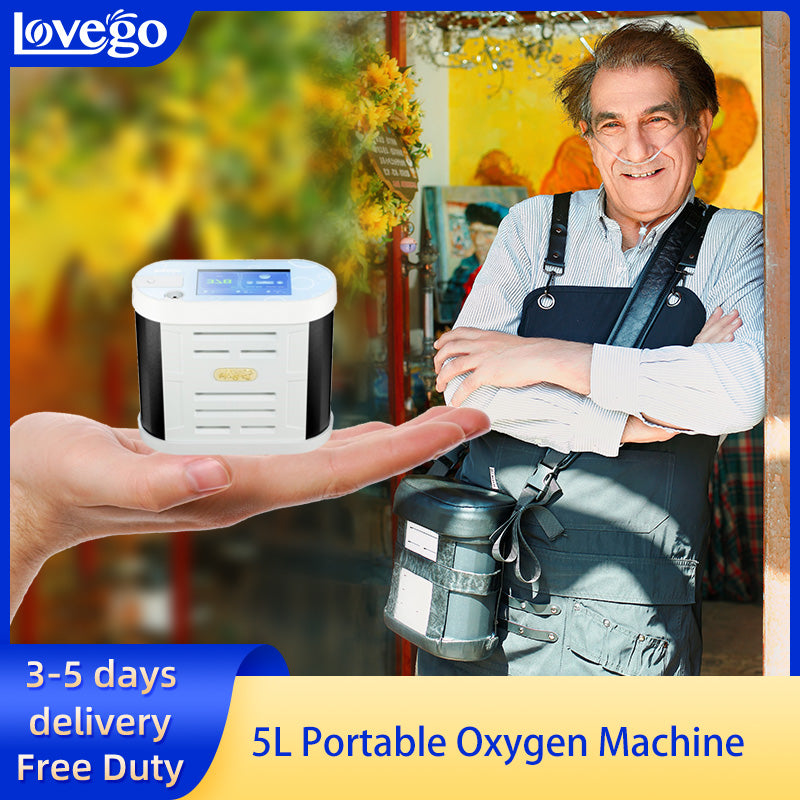
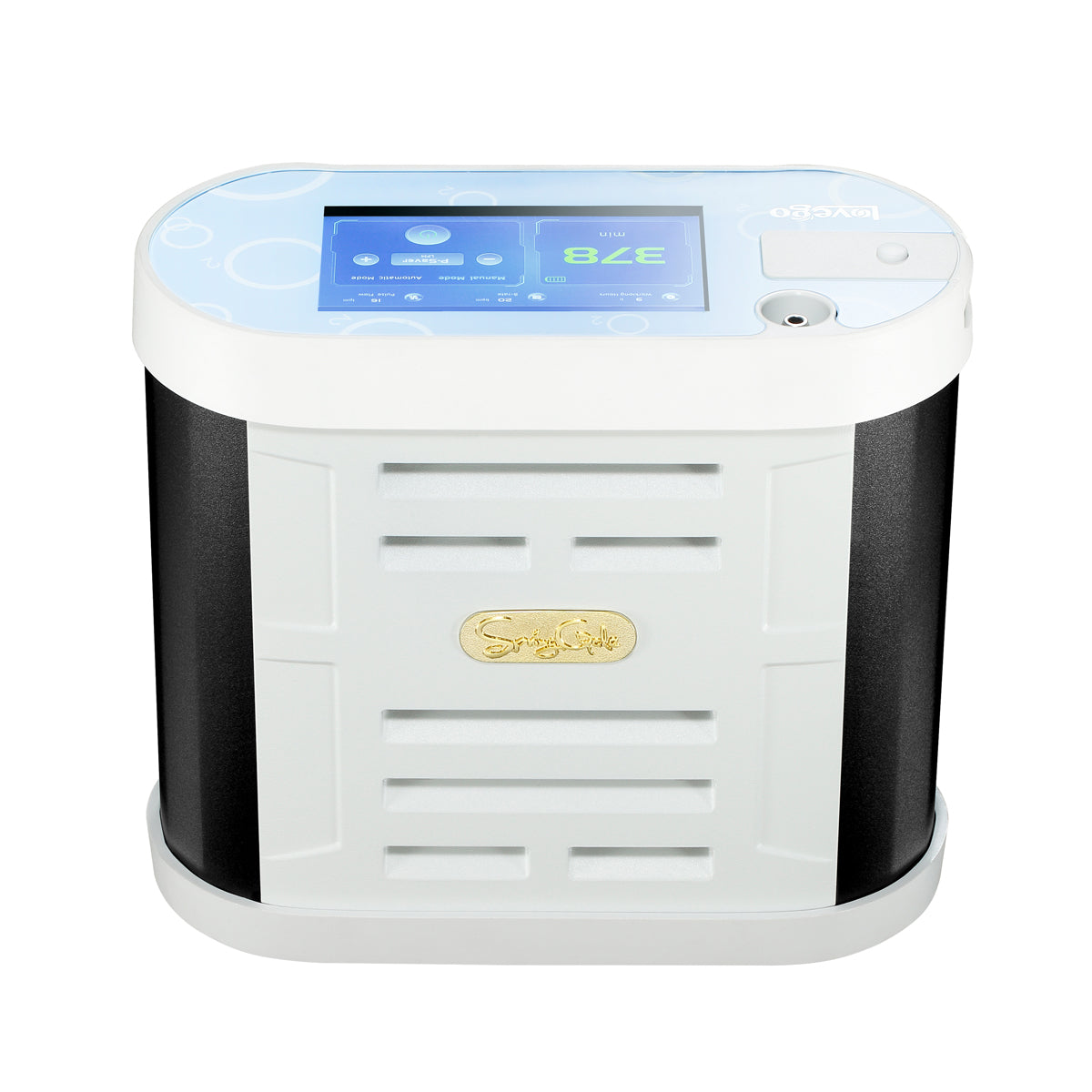

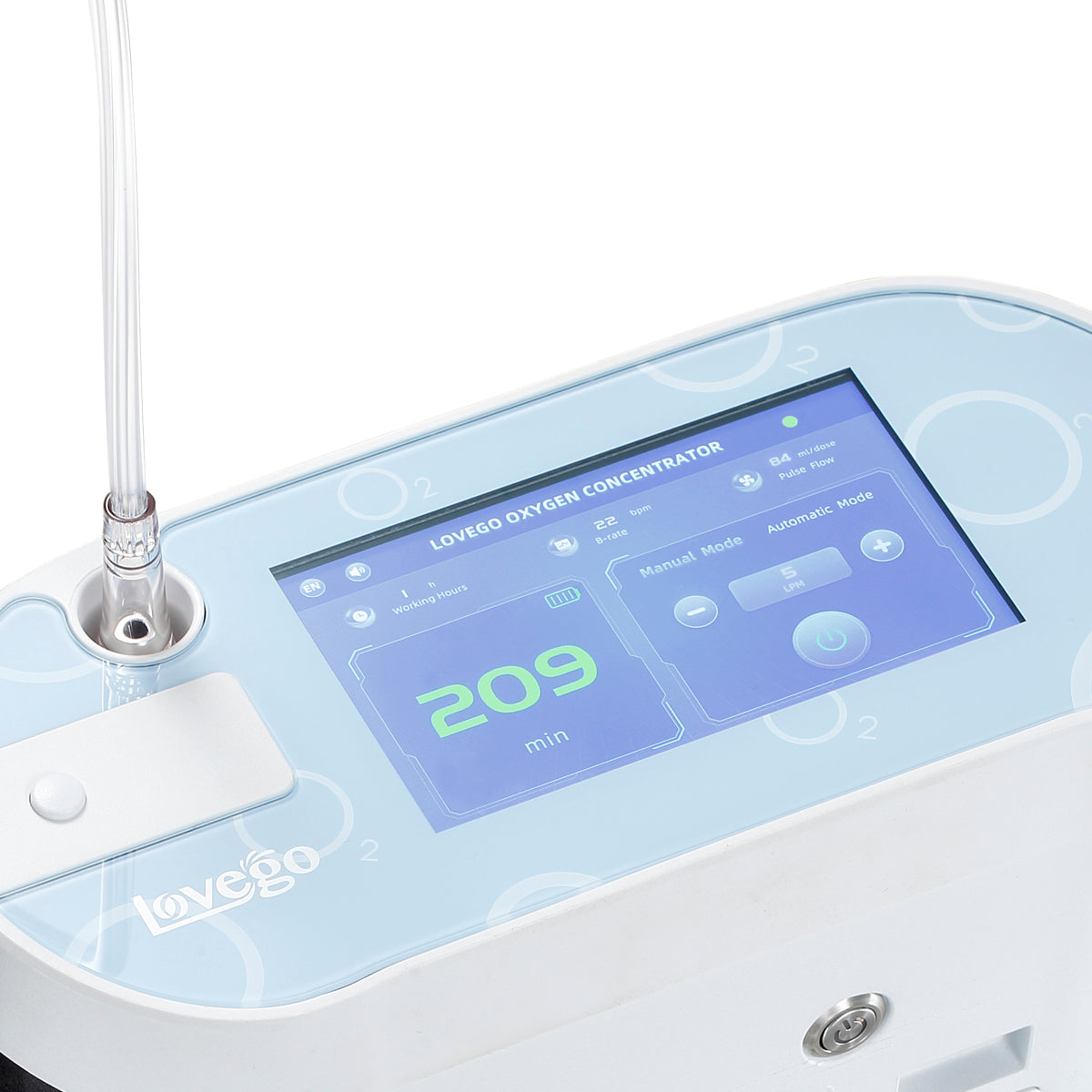
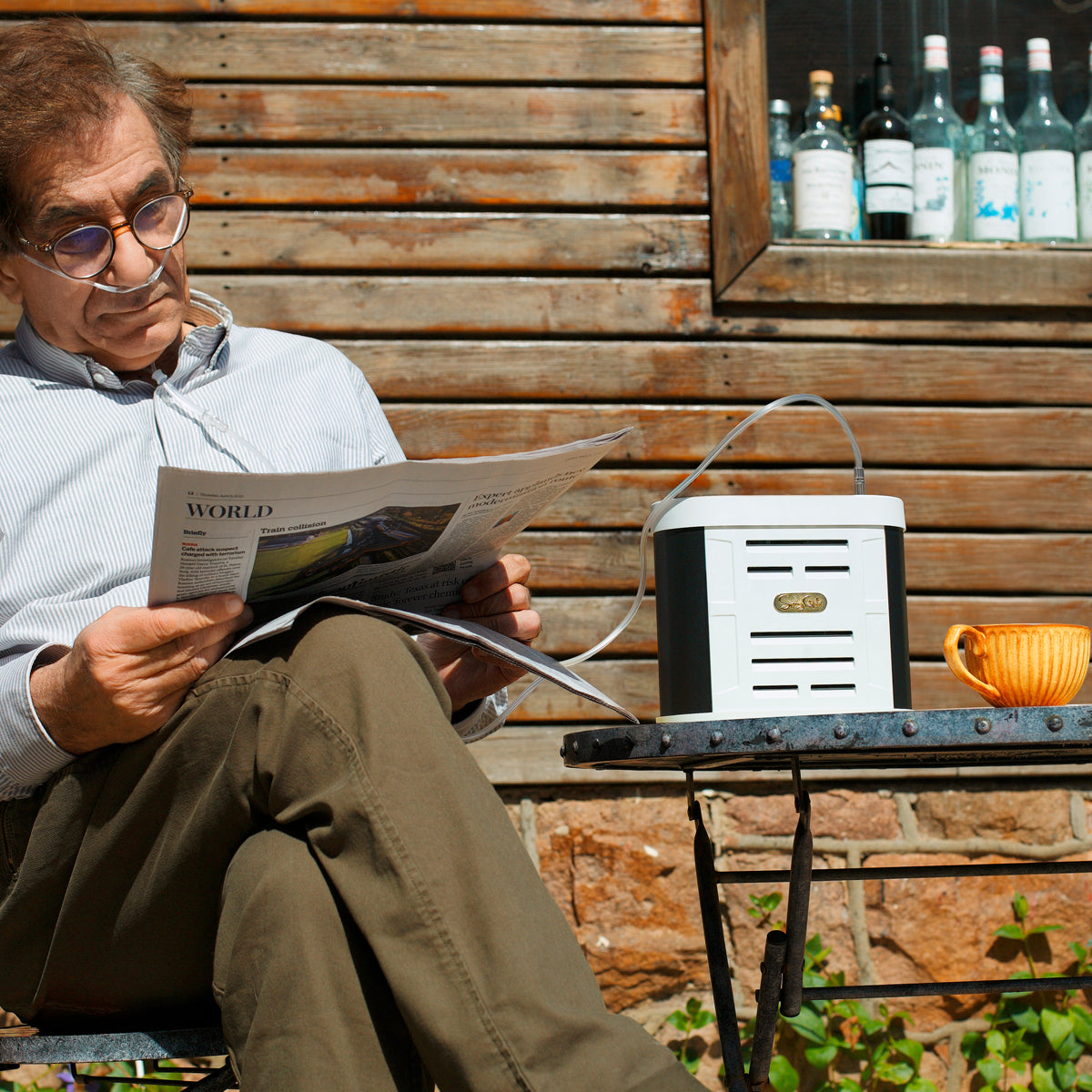
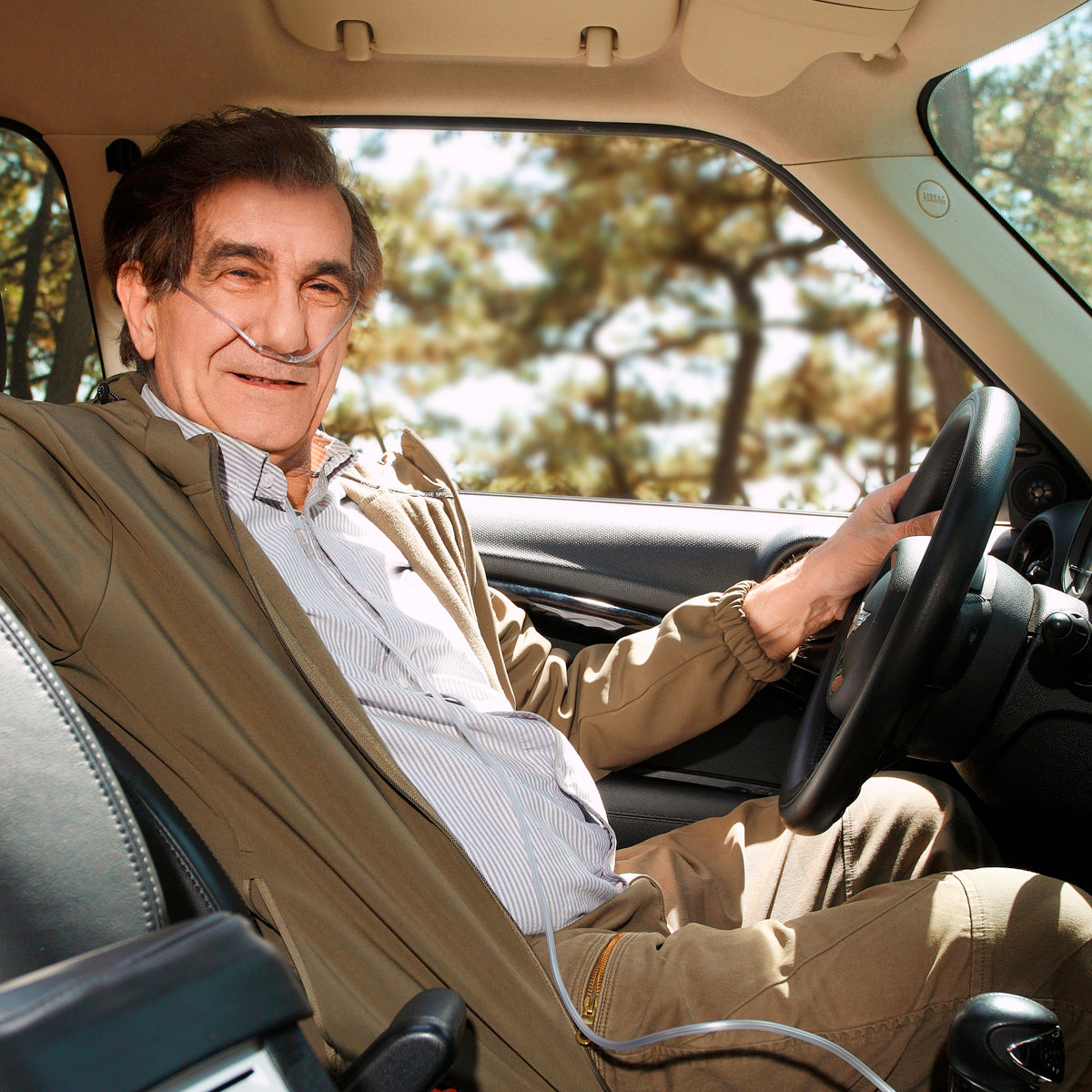
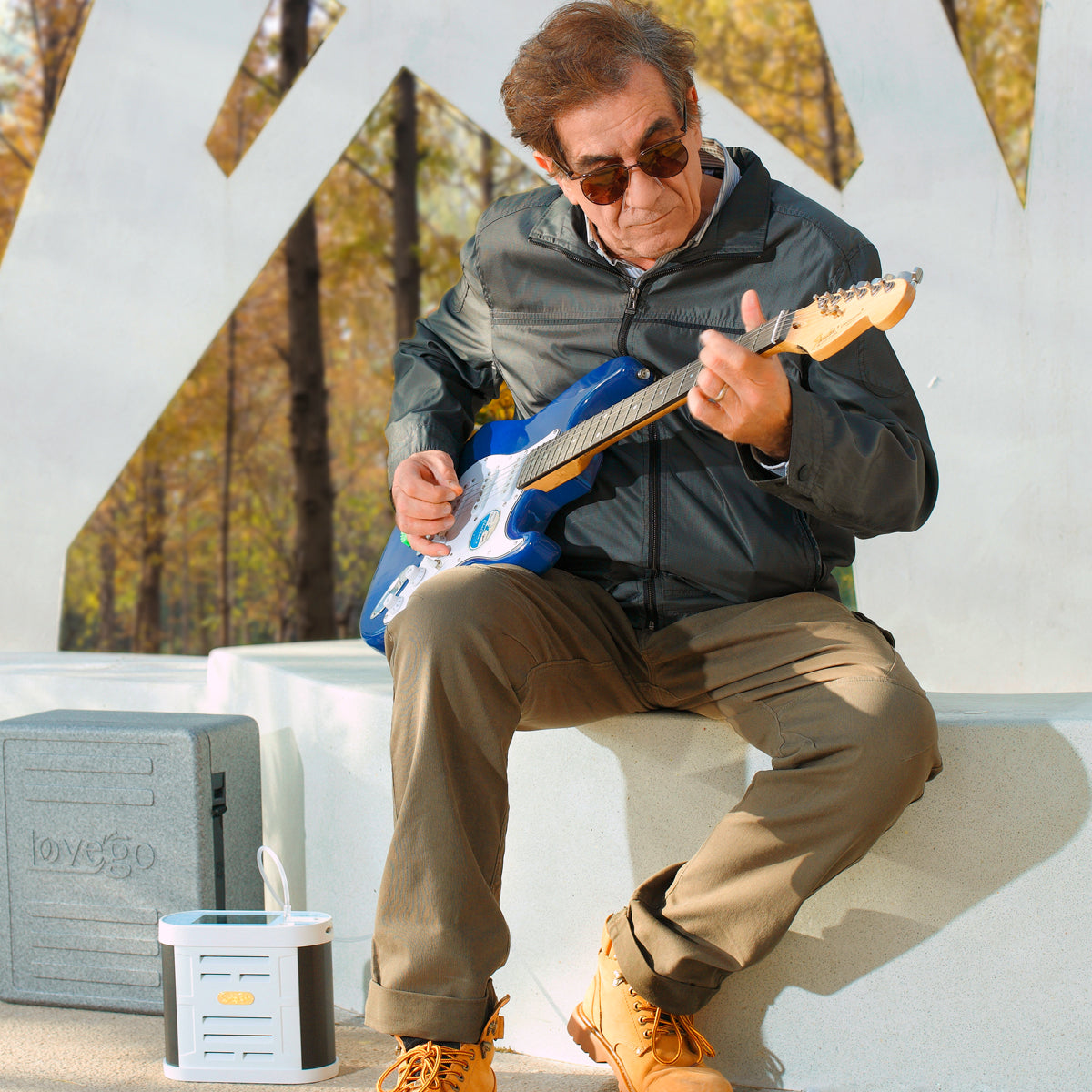
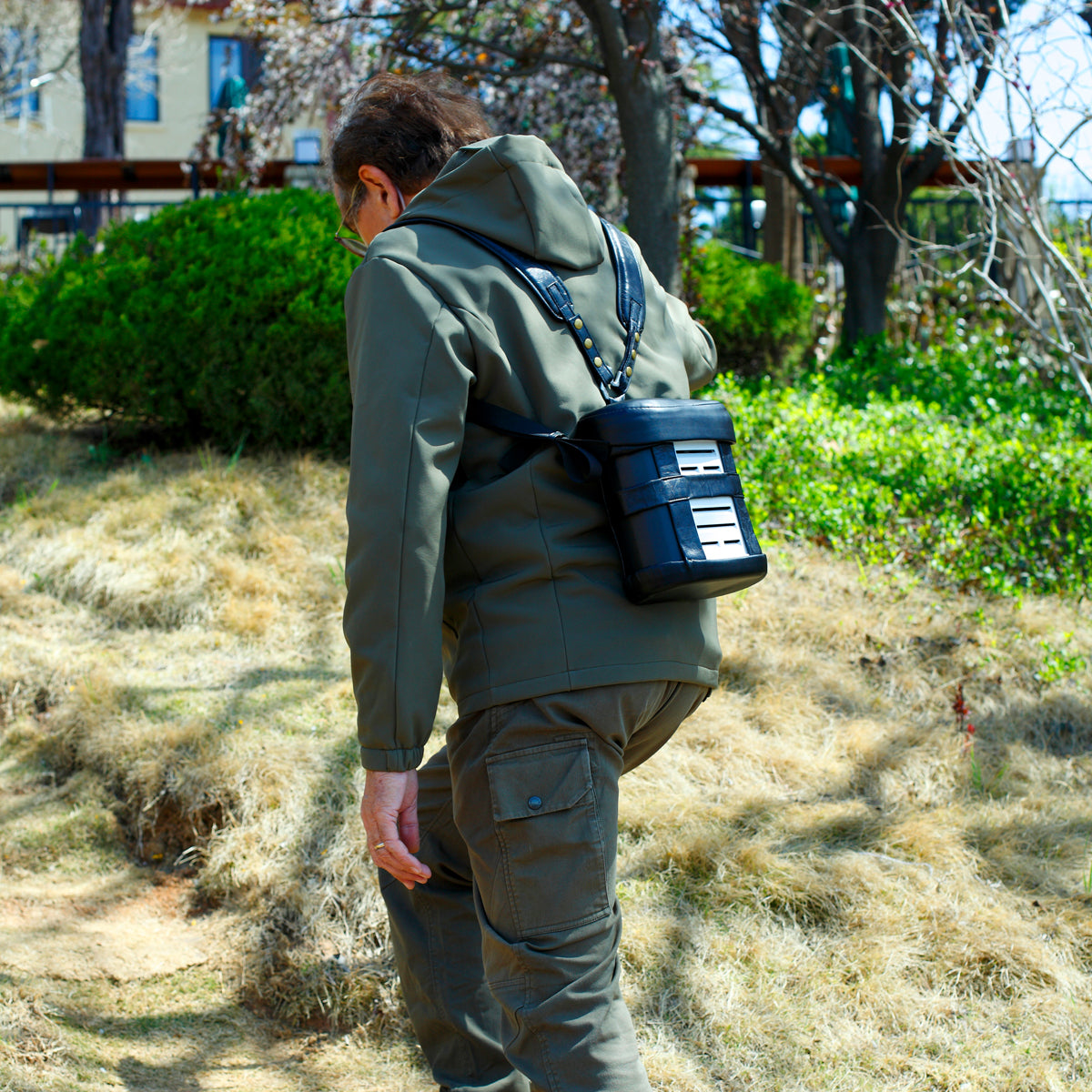

5L Portable Oxygen Concentrator with 8 Hours Battery
Feature
- 50% Larger Oxygen Flow than small POCs
- Big Touch Screen
- Mobile Phone Remote Control
- With Two Batteries (up to 8 hours total)
- 1 Hour Fast Charging by Car and Home Power

This product has no reviews yet.
Durable Portable Oxygen Concentrator
50% More Oxygen Supply
It can deliver medical grade oxygen at 93%, the same as the home use machine, and meets demands of 1LPM to 5LPM.
The oxygen supply of each pulse flow gear has increased by 50% from 210 ml to 333 ml, which has the same oxygen amount as home use 5LPM stationary oxygen concentrator. ( can be used for oxygen therapy when resting at home, outside activities and travel )
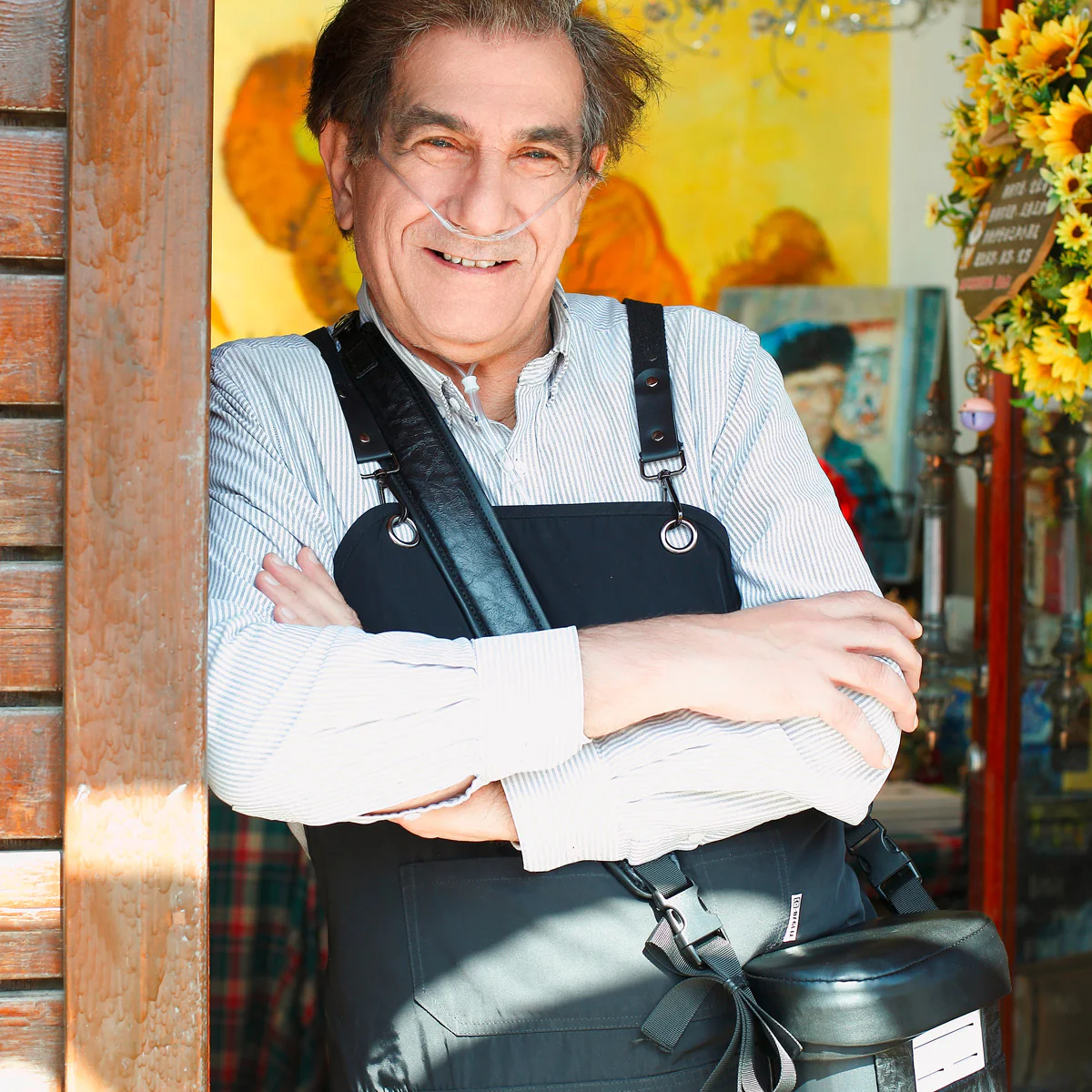
Big Touch Screen - Visually Friendly
There is a 4.3'' screen with a wonderful touch design, two times bigger than previous devices, making it user-friendly in daily life.
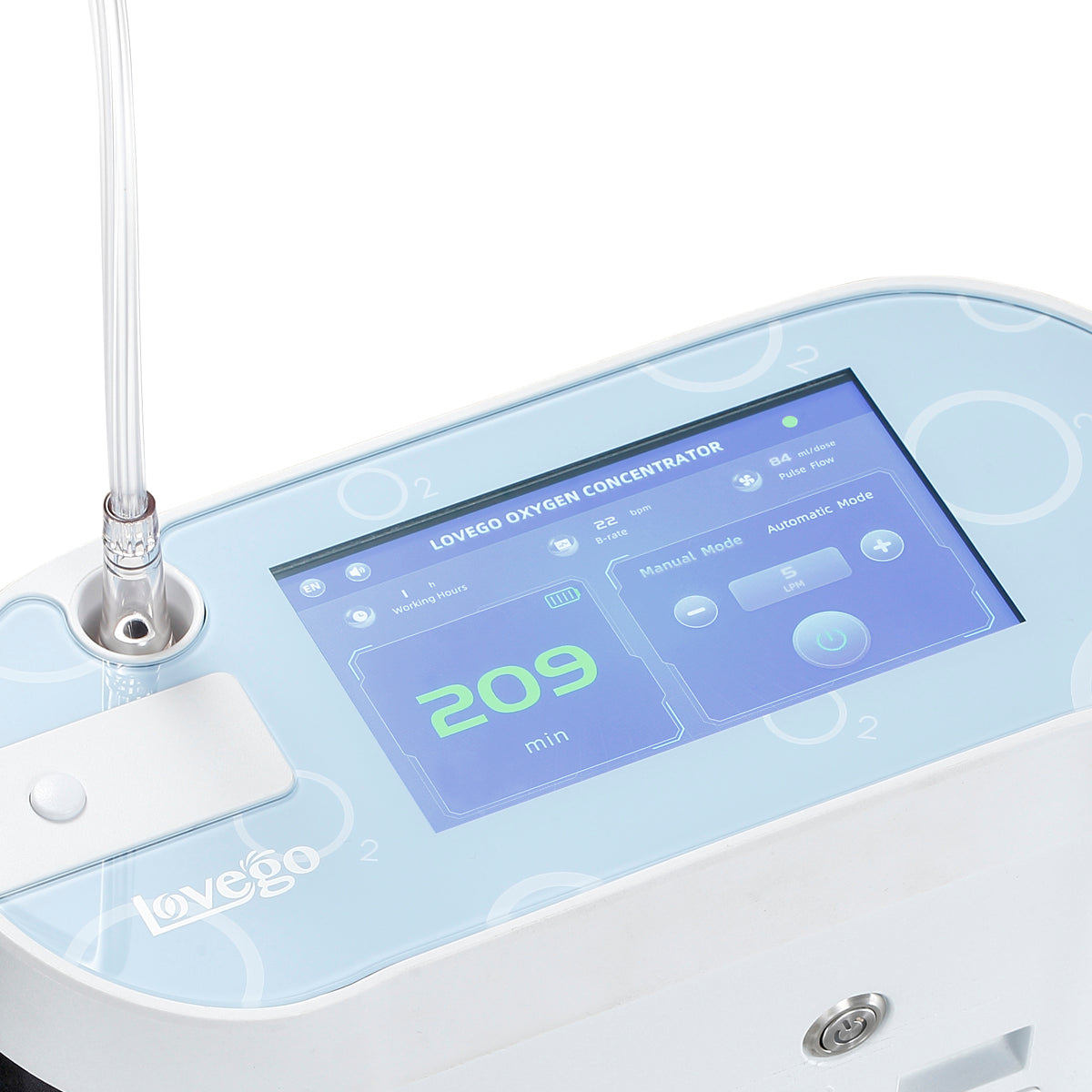
Remote Control by Mobile Phone
Lovego has a mobile phone App supported by Bluetooth to do remote control through the phone. This design is mainly to facilitate people's use when going out, sitting in wheelchairs, and lying in bed. They don't have to struggle to get the machine and then press the button. In addition, they can also monitor their oxygen therapy in real-time on their phones.
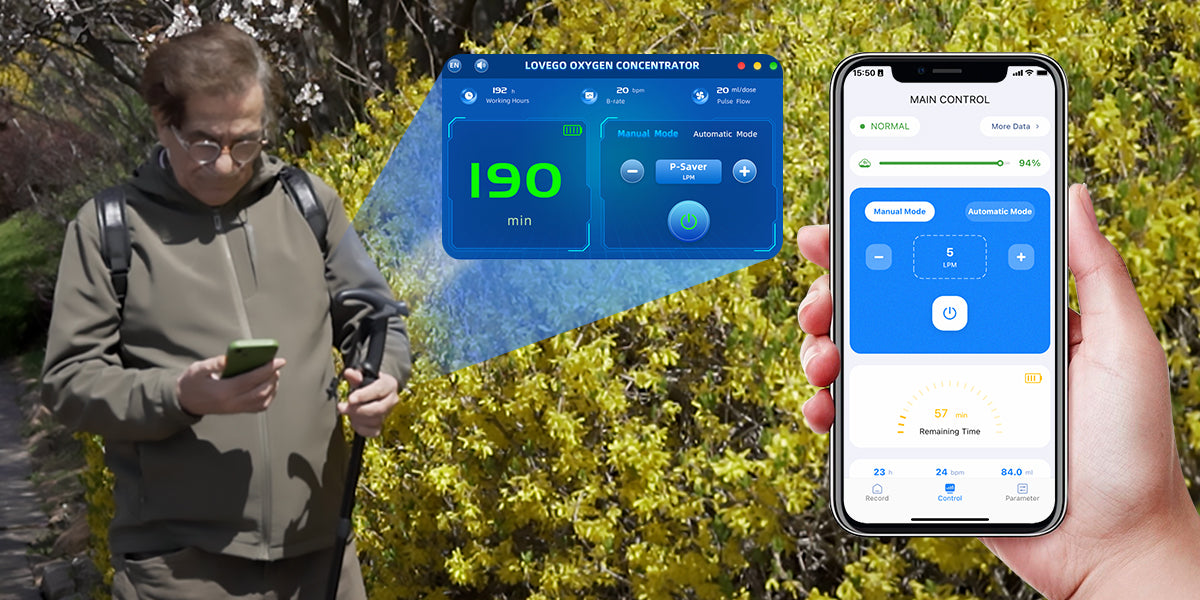
Durable - No Afraid of Drops
Considering that we are no longer as flexible as when we were young, there is a possibility that we may accidentally knock the machine over the table and fall to the ground. This machine uses the hardest aerospace material magnesium alloy as its structure. Meanwhile, the battery has been designed with built-in features that prevent the battery from catching fire or being damaged in the event of a drop. No matter how you fall, it won't break.
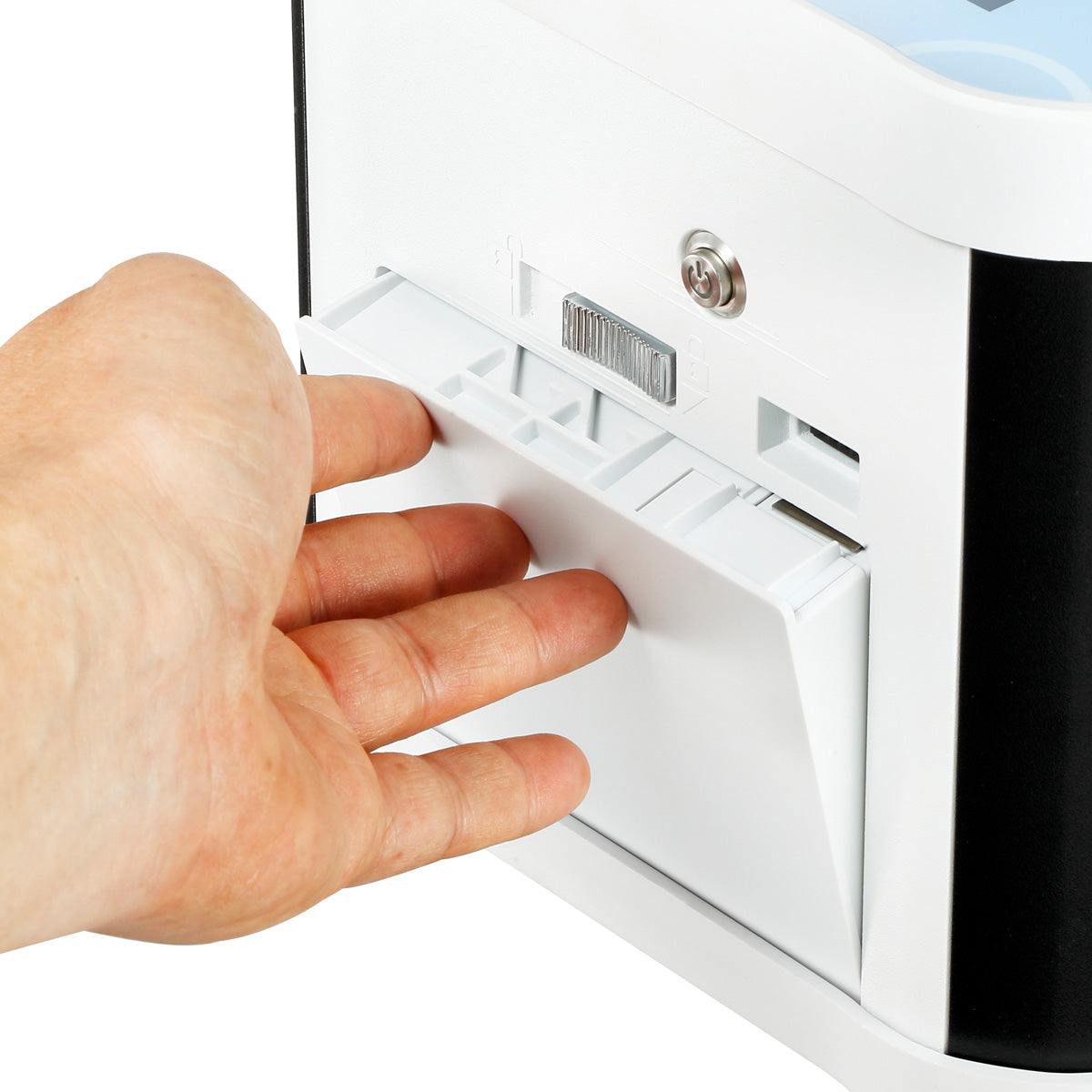
Battery Time and Recharge
One battery could support machine work for up to 4 hours. Two batteries can work up to 8 hours.
Plus, the lithium battery can be charged fully in 1 hour both in the car and on home power. It can always be ready even if you choose to take off on a trip without planning. There is no need to stress about battery time anymore. It might be best for your sudden trips.
If you pursue a longer battery time, just purchase extra batteries. It's small size and lightweight to carry.
| Battery Time / Battery Duration | |||
| Flow Settings | Total volume per minute (ml/min) | Standard Battery | Extra Battery |
| 1 | 400 ml | 4 hours | 8 hours |
| 2 | 660 ml | 3 hours | 6 hours |
| 3 | 1000 ml | 2 hours | 4 hours |
| 4 | 1340 ml | 1.5 hours | 3 hours |
| 5 | 1680 ml | 1.2 hours | 2.4 hours |
| Standard Battery Charging Time:
● Takes 1 hour to fully charge when the machine is off. ● When the machine is in use, it can take between 1 and 6 hours to fully charge, depending on the flow settings. | |||
Specifically, the app allows you to:
- Turn on/off machine, turn up/down flow rate on the mobile phone based on activity level or symptoms
- Monitor your respiratory condition and oxygen supply levels in real-time
- View the remaining battery time to better plan usage and recharging
No matter where you are - whether seated in a wheelchair, resting in bed, or anywhere else - you can easily adjust settings and monitor your status with just a tap on your phone. This offers much more flexibility and accessibility than having to manually operate the device.
Overall, wireless smartphone control provides greater freedom, convenience, and confidence when using your portable concentrator outdoors and on the go.
Lovego matches a pair of sunglasses nasal cannula for every SG machine. By wearing sunglasses nasal cannula, there will be no more tubes on our faces. It effectively solved the friction between the oxygen tube and the face and ear during long-term oxygen therapy.
When we go outside, people will no longer see someone on oxygen, but rather the vibrant person we really are. It can be equipped with myopia lenses, presbyopia lenses, and astigmatism lenses.
We can just be ourselves.

FAQ
Check out our FAQs and feel free to contact us if you need more help.
How does the oxygen concentrator work?
It draws in air from your surroundings, removes the nitrogen, and delivers oxygen. As long as there is electricity, it can continuously extract oxygen from the surrounding air.
How do you refill the oxygen?
There's no need for refilling. The device, when powered, can continuously generate oxygen by extracting it from the surrounding air.
I am unable to determine the five flow settings - my mother requires a setting of 2.5, not 2 or 3. What should I do?
You can start with a setting of 2 and check your mother's oxygen level (SpO2). If her SpO2 reading is below the recommended target range for oxygen therapy, you can increase the flow setting to 3. The oxygen prescription is variable. What matters most is keeping your mother's blood oxygen saturation at the right level for her condition, not sticking strictly to a prescription.
Is it suitable for use while sleeping?
It's generally not advised. Light breathers or mouth-breathers might not trigger the sensor, causing the machine to stop and alarm. Also, the portable concentrator operates at 50-55 decibels from 3.28 feet away, significantly louder than a home stationary unit's 40-45 dB. This high noise level can easily disrupt sleep when using the portable overnight.
Generally, we do not recommend using portable oxygen concentrators for sleep. But if traveling, it can serve as a temporary night-time solution. For quieter use, keep the machine outside the bedroom.
Can I use the portable oxygen device while it's charging?
Yes, you can.
If the machine is fully charged, is it safe to use while still plugged into the outlet?
Yes, it's perfectly fine.
One-Stop Guide for Picking Your Ideal Portable Oxygen Concentrator
Portable oxygen concentrators provide freedom and convenience for patients requiring long-term oxygen therapy. They supply vital mobile oxygen for everyday activities, travel, and doctor visits. However, choosing the right portable concentrator can be more complex than it seems.
Unlike stationary home oxygen systems that provide a steady, continuous flow, portable concentrators use a pulsating flow that is less straightforward to understand.
In addition, the market is flooded with non-medical grade portable concentrators. Many doctors struggle to distinguish these devices from medical-grade options. As a result, patients often end up purchasing units that do not actually meet their oxygen therapy needs.
Importantly, the concealed aspect of oxygen deficiency often results in patients not being aware that they're getting inadequate oxygen from an inferior portable concentrator. Their bodies, persistently enduring a state of long-term low oxygen, gradually worsen over time.
To make matters worse, doctors are unlikely to know that you are not getting enough oxygen supplements when you get back home. So, doctors are hardly able to find the real reason. It can lead doctors to make the wrong diagnosis and, in turn, postpone the right treatment, causing the condition to deteriorate further, again and again.
To help avoid these critical issues, we have written this comprehensive guide. Our goal is to equip patients and their families with the knowledge to choose the ideal portable oxygen concentrator. Armed with the right information, you can choose a portable concentrator by yourself that will genuinely improve your quality of life and avoid potentially serious pitfalls.
The key steps this guide will cover are:
- Understanding your oxygen prescription and how to adjust flow rates based on your needs and activity levels
- Learning the difference between continuous flow and pulse flow systems
- Learning how to identify the oxygen capacity of pulse flow
- How to identify the non-medical grade concentrators
- Recognizing the dangers of non-medical grade concentrators
Here we go, let's look at how doctors issue oxygen prescriptions. What are the clinical guidelines for doctors prescribing long-term home oxygen therapy for patients whose condition is stable? Can we adjust the oxygen flow by ourselves?
I. Understanding Your Oxygen Prescription
The Guide to Long-Term Home Oxygen Therapy
Doctors follow specific clinical guidelines when prescribing home oxygen therapy. The goal is to keep your blood oxygen saturation (SpO2) within a target range based on your condition:
- If you're a patient with Type I respiratory failure, or if there's no high risk of holding onto too much carbon dioxide in your body, the aim is to keep your blood oxygen saturation (SpO2) levels from 94% to 98%.
- On the other hand, patients dealing with Type II respiratory failure—often seen in chronic lung conditions like Chronic Obstructive Pulmonary Disease (COPD)—or those at high risk of retaining excess carbon dioxide should try to maintain blood oxygen saturation (SpO2) levels between 88% and 92%.
- For COPD patients specifically, it's usually enough to maintain their blood oxygen saturation (SpO2) level just above 90%. This helps prevent making their condition worse by causing them to retain more carbon dioxide. It's not necessary to strive for significantly higher blood oxygen saturation levels.
- The prescription flow rate is given in LPM (liters per minute) of continuous oxygen flow. You should use the prescribed oxygen for at least 15 hours per day. If you can reach 18 hours per day, it will be better.
How to Adjust Your Flow Rate
Doctors may prescribe oxygen flow rates for four conditions based on your oxygen needs:
- Resting
- Daily activities
- Exercise rehabilitation
- Sleep
If your prescription only provides one flow rate, that rate is for resting. You may need to adjust the flow rate for other activities to keep your oxygen saturation (SpO2) levels in your target range.
General guidelines for adjusting flow rate:
- Activities: Resting rate x (100-150%)
- Exercise: Resting rate x (150-200%)
- Sleep: Resting rate + 1LPM
Considering issues such as insufficient ventilation during nighttime sleep, decreased respiratory muscles, and sleep apnea, if oxygen deficiency occurs during sleep, the nighttime oxygen flow can be increased by 1LPM (Liters Per Minute) based on the oxygen flow during quiet rest.
Key Points
Keep a close watch on your oxygen saturation levels (SpO2) and adjust the oxygen flow accordingly to stay within the desired range. Remember, our bodily requirement for oxygen flow is regulated by blood oxygen saturation (SpO2), so that's the crucial factor we need to prioritize.
- Increase flow if your oxygen saturation level drops below the target range
- Decrease flow if your oxygen saturation level rises above the target range
Your oxygen saturation level will stabilize in 3-5 minutes after each adjustment of flow rate.
Doctors often recommend having a 5LPM concentrator at home. This covers:
- Stable periods (1-2 LPM needed)
- Infections/flare-ups (3-4 LPM may be needed)
If even 5 LPM cannot maintain your target oxygen saturation level range, your condition may require medical intervention.
Now that we understand your oxygen needs in different situations and the doctor's motive. Next, we must ensure the portable concentrator meets your daily needs, can handle increased demand during travel or stable periods, and is prepared for any future flare-ups where your oxygen needs may rise.
Portable concentrators mainly supplement oxygen when out. However, when away from home, your demand might go up at any time. And there is no option to switch to other oxygen sources. Thus, adequate oxygen-producing capacity is the most crucial factor in selecting a portable unit.
II. Differences Between Pulse Flow vs Continuous Flow Oxygen Delivery
Before choosing a portable concentrator with sufficient capacity, we first need to understand the key differences between pulse flow and continuous flow oxygen delivery.
The settings on portable oxygen concentrators are pulse flow levels - 1, 2, 3, 4, 5. Are these pulse flow levels equal to continuous flow? If not, how can we tell the difference in their capacities?
First, let's understand how they work:
- Continuous flow: The device provides oxygen in a continuous stream. We use LPM (Liters Per Minute) to measure its rate.

- Pulse flow: The device provides oxygen in bursts or "pulses." Oxygen is provided when you inhale (the switch activates and delivers a pulse of oxygen), and delivery ceases during exhalation. The oxygen capacity of pulse flow is determined by the volume of oxygen delivered with each inhalation.

How to Calculate the Pulse Flow
To replicate the effect of continuous flow with pulse flow, we need an equivalent dose of oxygen during inhalation in pulse mode.
So, how much oxygen do we actually inhale under continuous flow?
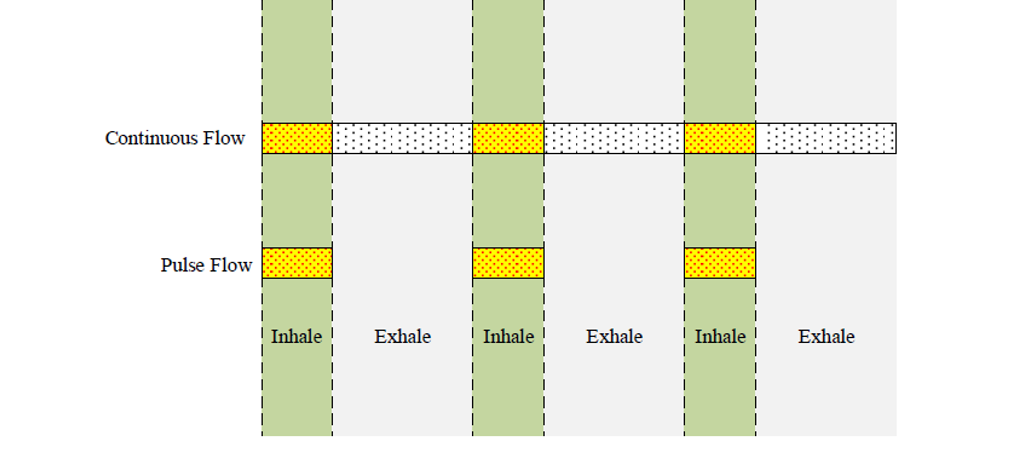
On average, an adult's respiratory process involves spending double the time exhaling compared to inhaling. This means that a complete breath cycle, which includes both inhalation and exhalation, designates approximately one-third of its duration to the act of inhalation.
In a scenario where there is a consistent oxygen flow rate of 1 liter per minute, we are only actually breathing in this oxygen for one-third of each minute. Therefore, the volume of oxygen we inhale in this fraction of a minute equates to 1L multiplied by 1/3. This yields a result of 0.333L or, equivalently, 333ml. Accordingly, when engineering a pulse flow system, it suffices to deliver a dosage of 333ml of oxygen in one minute (Total Volume per Minute). This would emulate the effects of a continuous oxygen delivery system operating at 1 Liter Per Minute (LPM).
To make this easier to understand, let's break down the key steps in calculating equivalent pulse flow:
- Adult exhalation time is 2 times longer than inhalation time
- So in 1 minute: We inhale for 1/3 of that minute
- So the total volume of oxygen we inhale in that 1/3 minute is:
- 1 LPM of flow
- Multiplied by the 1/3 minute we are inhaling
- Which equals 1 L x 1/3 minute = 0.333 L = 333 ml
Therefore, a pulse dose of 333 ml (total volume per minute) delivers the same amount of oxygen as 1 LPM continuous flow in one minute. If we want the effect of a higher continuous flow rate (LPM), we can directly multiply the continuous flow rate by 1/3 to get the dose of the pulse flow.
Design principles for pulse settings typically observe the following convention: A pulse level of 1 delivers an equivalent oxygen dose to a continuous flow at 1LPM. Likewise, pulse levels 2, 3, 4, and 5 administer doses corresponding to continuous flows of 2LPM, 3LPM, 4LPM, and 5LPM respectively. Pulse flow levels are designed accordingly:
- Level 1 aims to deliver 333 ml to equal 1 LPM, (1L x 1/3 = 0.333L = 333ml)
- Level 2 aims to deliver 666 ml to equal 2 LPM, (2L x 1/3 = 0.666L = 666ml)
- Level 3 aims to deliver 1000 ml to equal 3 LPM, (3L x 1/3 = 1L = 1000ml)
- Level 4 aims to deliver 1333 ml to equal 4 LPM, (4L x 1/3 = 1.333L = 1333ml)
- Level 5 aims to deliver 1666 ml to equal 5 LPM, (5L x 1/3 = 1.666L = 1666ml)
The following is a table of pulse doses:
| Flow Setting of Pulse Flow | 1 | 2 | 3 | 4 | 5 |
| Total Volume per Minute | 333ml | 666ml | 1000ml | 1333ml | 1666ml |
The Second Standard of Pulse Flow Oxygen Dosage
With further research on breathing, it was discovered that during inhalation, only the first two-thirds of the air enters the lungs for gas exchange. The other one-third stays in our windpipe and leaves when we exhale next.
This means if we think of a continuous flow of 1 liter of air per minute, we breathe in oxygen for about one-third of that minute. And in the time of that one-third minute, only two-thirds of the oxygen gets to our lungs for gas exchange.
So, the actual amount of oxygen used by our lungs is calculated like this: 1 Liter x 1/3 (time spent inhaling) x 2/3 (the part that reaches the lungs). This equals 0.222 liters or 222 milliliters.
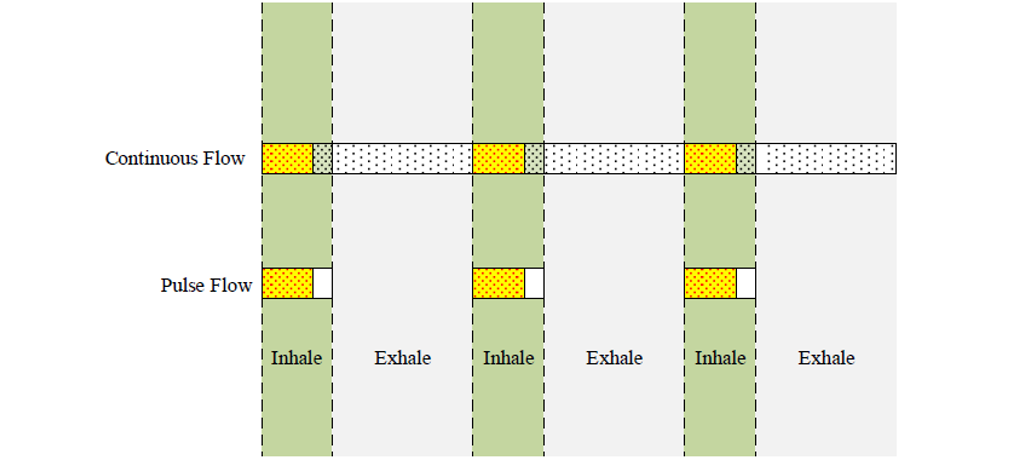
With this new theory, the second standard pulse dose supply reduces the oxygen amount by one-third compared to the first standard. By reducing the oxygen dose by a third, portable oxygen concentrators can be made smaller, lighter, and have longer battery life. However, many patients have reported feeling oxygen-deprived in lower oxygen dosage settings of the second standard. And their blood oxygen levels are below therapeutic targets.
The Second Standard of Pulse Flow
| Flow Setting of Pulse Flow | 1 | 2 | 3 | 4 | 5 |
| Total Volume per Minute | 210ml | 420ml | 630ml | 840ml | 1050ml |
The second standard requires that all oxygen supplied via pulse flow must reach the lungs for optimal gas exchange. However, due to constraints like tracheitis and lung lesions in patients, achieving this ideal condition seems unattainable, and individual results vary widely. Further studies may be needed to improve to correspond with patients' real-life experiences.
Currently, there is no unified standard on the market. The oxygen dosages of pulse flow are set by the manufacturers themselves. The following are two types of portable concentrators on the market:
- The first standard offers 333 ml/min per setting.
- The second standard provides 210 ml/min per setting.
So, two different devices may deliver different amounts of oxygen, even at the same pulse flow setting, if they adopt different standards of pulse flow. When we want to judge the oxygen production capacity of a portable oxygen concentrator and ensure that its pulse flow can provide sufficient oxygen, we only judge by its Total Volume per Minute (TVPM), rather than the number of flow sets.
If a device's TVPM exceeds 1666 ml/min, it can ensure an oxygen supply equivalent to a 5 LPM continuous flow, which ensures that we can get enough oxygen supplement in various situations over the long term.
Please note: Doctors do not know how each manufacturer sets the pulse flow rate, so we can only rely on ourselves to identify it.
III. How to Identify Non-Medical Grade Concentrators
In addition to oxygen dosage, we must also consider the oxygen concentration of portable concentrators.
1. Neglect of Oxygen Concentration
The oxygen prescriptions that we've discussed above are all premised on the use of medical-grade oxygen, which is defined by a standard purity level of 90% or higher. However, there are still many non-medical grade portable concentrators on the market for healthy people to use on plateaus or mountain climbing.
These recreational concentrators typically can achieve up to 90% concentration, but only when operating at a flow rate of 1 liter. However, when the flow rate is increased beyond 2 liters, the concentration significantly diminishes to about 30%. This drastic drop-off falls far short of meeting medical requirements. For our patients who require long-term oxygen therapy, it is critical to know how to recognize them and avoid their pitfalls.
The key point: the medical-grade portable concentrator can maintain ≥90% concentration at all flow rates
2. Risks of Non-Medical Device Standards
Firstly, in the early stages, when oxygen needs are low, these devices may seem adequate. But as the disease progresses, oxygen needs to rise. As we increase the flow rate accordingly, we may assume we're getting enough oxygen. But in reality, the concentration has dropped too low without us realizing it. Over time, consistently receiving insufficient, low-concentration oxygen leads to chronic hypoxia and faster disease progression.
Secondly, these recreational concentrators adhere to general industrial standards, which are much less than the strictest medical standards. Therefore, they do not assume any liability for patients.
When they malfunction and stop producing oxygen, there is no alarm system to notify the user. Patients are unaware that they have been breathing normal air for an extended period, leading to rapid disease progression.
Some inferior models even display a fixed, false oxygen concentration on the screen to deceive customers. This is strictly prohibited in medical concentrators. You could identify it by checking if the concentration reading continuously changes when you adjust the flow rate. If the screen shows a motionless number, it is fake.
Thirdly, these non-medical devices can lead to misdiagnosis by doctors.
When physicians prescribe medical-grade oxygen, they assume a concentration of above 90%. However, they might not be aware that a patient is using a non-medical, recreational model. When a patient's condition worsens due to long-term use of non-medical grade oxygen at home, doctors have no way of knowing it. In this way, doctors will never be able to find the real cause of disease progression, delaying the best opportunity for treatment and causing our diseases to develop and worsen repeatedly.
If patients do not know the truth and mistakenly purchase such machines, they will not only have to spend more money on medical treatment and hospitalization in the future, but they will also suffer physical and mental pain from worsening conditions and shorten their lifespan. Therefore, it is advisable not to prioritize cost over quality when buying a medical-grade oxygen concentrator; ensure it has an oxygen concentration of 90% or higher.
3. Make an Informed Purchase
After understanding the above three key factors, we can identify the oxygen capacity of portable oxygen concentrators easily and select a suitable device to meet our needs in the long term. No one can lie to us and steal money from us anymore.
- Knowing different needs of oxygen therapy in different situations.
- Identify oxygen capacity by Total Volume Per Minute (TVPM)
- Avoids pitfalls of recreational devices

